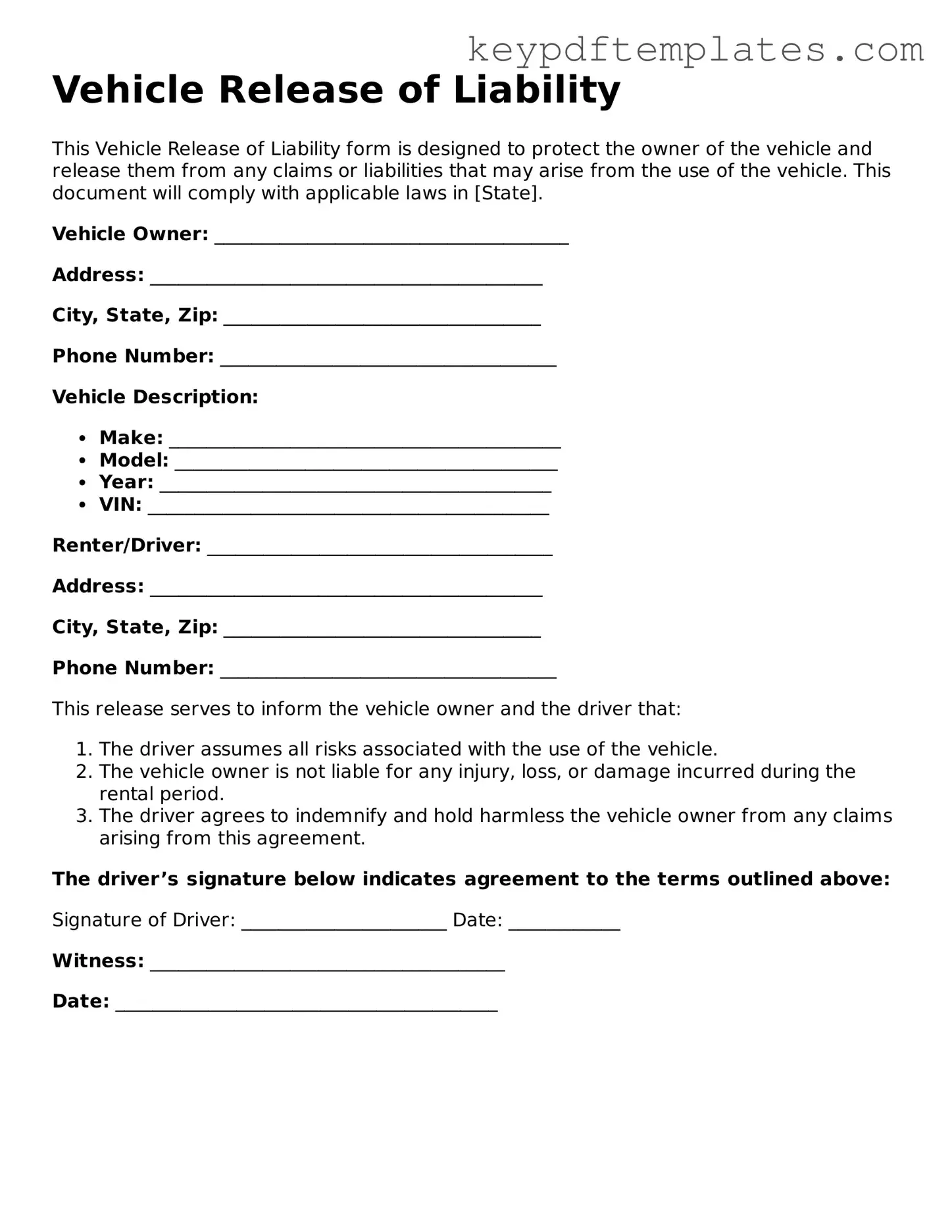Printable Vehicle Release of Liability Template
The Vehicle Release of Liability form is a legal document that protects vehicle owners from claims or damages that may arise after they transfer their vehicle to another party. By signing this form, the new owner acknowledges their responsibility for the vehicle and releases the previous owner from any future liabilities. Understanding this form is crucial for anyone involved in the buying or selling of a vehicle, ensuring a smooth and secure transaction.
Modify Document Online
